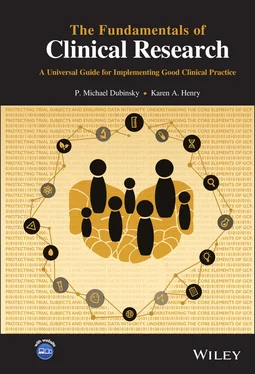The IRB/IEC should have written procedures (SOPs) in place to direct its operations. There should be written records of all meetings including decisions. Meeting minutes should list the members present and whether a quorum was achieved. The number of members constituting a quorum will be defined in an SOP.
SOPs are a key part of meeting ICH E6(R2) across the board and the IRB expectations are no exception. The IRB/IEC’s role in ensuring that ethical practices and policies are built into every trial is documented in part by having written procedures and records documenting that those procedures were followed. The procedures that are expected to be in writing include:
Determining the composition such as qualifications for members and under what authority the IRB/IEC is established.
How scheduling will be handled. This might include timing, notification procedures, and how members will be notified.
How the Committee will conduct initial and ongoing reviews of trials.
Criteria for ongoing review of trials.
Special procedures such as expedited review
Specifications that apply to every trial such as: not enrolling subjects until a written approval for the trial is given; deviations from an approved protocol cannot be made without IRB/IEC approval; items that must be reported to the IRB in a timely manner such as protocol changes, changes which might increase subject risk, adverse experiences that are unexpected or serious, and new information.
The IRB/IECs timeline for reporting decisions on approvals as well as reasons for decisions and any criteria for appeals of decisions.
The IRB/IEC should maintain all records for a retention period of 3 years. That is a minimum timeframe listed in some regulations. The retention period may vary. In the United States the retention period for IRB records is 3 years [1] after completion of the research however in the European Union the archiving requirement is for 25 years [2] after the end of the clinical trial.
8.7 Noncompliance by IRB/IECs – Areas of Risk
IRB/IECs are generally regarded and viewed as professional organizations established by government legislation or within the structure of academic medical institutions where clinical trial research may be centered. There are however commercial or independent IRB/IECs that operate globally which have found a niche in the business of clinical trial conduct. The independent IRBs have become a substantive presence in the review of clinical trials and the ethics of using a commercial or paid entity to conduct a review that is intended to determine if there are among other things any ethical concerns about a clinical trial plan may seem a dichotomy. However independent IRB/IECs have been around for some time and offer a sense of continuity to the review process especially when there are multiple trial sites involved as with large phase III trials.
Irrespective of whether the IRB/IEC is independent or affiliated with the institution where the trial is occurring inspections of IRB/IECs have shown noncompliance in a variety of areas. Many of the deficiencies might be described as administrative but the primary role of the IRB/IEC is in a way just that – Administrative. A list of the types of deficiencies follows and it should provide a basis for deciding whether to add any risk assessment regarding the IRB/IEC review process for a given trial.
Inadequate meeting minutes
Inadequate membership rosters
Inadequate initial and continuing review of research
Inadequate written procedures for prompt reporting of noncompliance, suspension, or termination
Quorum issues
Failure to promptly report noncompliance, suspension/termination of a site
It is useful to point out that from a practical standpoint IRB/IECs have established administrative control mechanisms due to the detailed requirements and record keeping that they must adhere to. This administrative staff is not the IRB/IEC per se but they (the staff) often know the details of the regulatory requirements better than the IRB members themselves. While not foolproof, having such organizational units overseeing and directing the IRB’s functional activities can and does prevent noncompliance.
The US FDA publishes data from their inspections of the IRB/IECs that register with them. The items listed above are compiled from the inspections that the US FDA conducts and reported in FDA’s Good Clinical Practices webpage [3].
The IRB/IEC represents the unbiased third‐party reviewer for all the essential documents which comprise the clinical trial plan. The protection of the rights, well‐being and safety of human subjects is the primary role of the IRB/IEC.
In order that this role is performed in a manner which is credible the ICH E6(R2) guideline calls for certain criteria to be in place so that as needed the procedures that were followed, the qualification of the people who followed the procedures and the records maintained of the work are complete, reliable, and accurate.
Avoiding ethical pitfalls should be inherent in the culture of the medical community that conducts human clinical trials, but history has shown that is not always the case. The IRB/IEC requirements are necessary and not likely to be set aside.
Knowledge Check Questions
1 Why do you think that the IRB/IEC requirements call for one member to be independent of the institutional/trial site? Please provide a brief narrative explaining your answer.
2 While not a common practice today, in the past prisoners were often called upon to participate in clinical trials. Would you consider prisoners to be a vulnerable population? If so, what might be some of the issues which would envision arising when an IRB/IEC is reviewing a protocol which allows them to be subjects in a clinical trial?
3 According to ICH E6(R2) the IRB/IEC must have written standard Operating procedures in place for all the functions they implement. True or False?
4 A quorum for an IRB is always three members being present, Correct? If not where is the number for a Quorum found?
5 According to regulatory authority reports one common deficiency for IRB/IECs is inadequate ongoing review of studies. Can you briefly explain how you might avoid such a deficiency if you were part of an IRB/IEC.
1 1 FDA (2002). Code of Federal Regulations Title 21 CFR 56.115 (b). https://www.accessdata.fda.gov/scripts/cdrh/cfdocs/cfcfr/CFRSearch.cfm?fr=56.115(accessed 6 April 2020).
2 2 EU Regulation (2014). REGULATION (EU) No 536/2014 OF THE EUROPEAN PARLIAMENT AND OF THE COUNCIL of 16 April 2014 on clinical trials on medicinal products for human use, and repealing Directive 2001/20/ECEU Regulation 536, Article 58 ‐ Archiving of the clinical trial master file. https://ec.europa.eu/health/sites/health/files/files/eudralex/vol‐1/reg_2014_536/reg_2014_536_en.pdf(accessed 6 April 2020)
3 3 FDA Bioresearch Monitoring (BIMO)(2021). Inspection Metrics. https://www.fda.gov/science‐research/clinical‐trials‐and‐human‐subject‐protection/bimo‐inspection‐metrics(accessed 6 April 2020)
9 Investigator and Sponsor Roles and Responsibilities
Karen A. Henry
Clinical trials should be conducted in accordance with the ethical principles that have their origin in the Declaration of Helsinki, and that are consistent with GCP and the applicable regulatory requirement(s). Source: ICH [1]
The ICH GCP guidance (E6(R2)), as it is today, reflects the attempt to prevent harmful consequences of experimentation on humans over centuries ( Chapter 1History). In societies, there have always been someone seeking to sell the next “wonder drug” and a “scientist” who is curious about how human bodies work and how they would respond to new or modified vaccines, treatments, or potential cures. Per ICH E6(R2), the sponsor is “an individual, company, institution, or organization which takes responsibility for the initiation, management, and/or financing of a clinical trial” (ICH E6(R2) 1.53) and the investigator is “a person responsible for the conduct of the clinical trial at a trial site” (ICH E6(R2) 1.34). ICH has provided guidance on the responsibilities of the sponsor (ICH E6(R2) 5) and of the investigator (ICH E6(R2) 4). Although the sponsor and investigator essentially collaborate to create and execute a clinical trial with an aim to discover new or improved vaccines, treatments, or potential cures new treatments, the sponsor and investigator have specific and independent responsibilities that are stipulated by ICH (E6(R2)) and perhaps regional or local regulatory requirements.
Читать дальше












